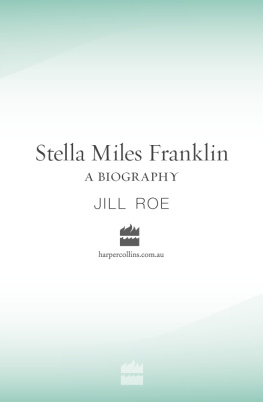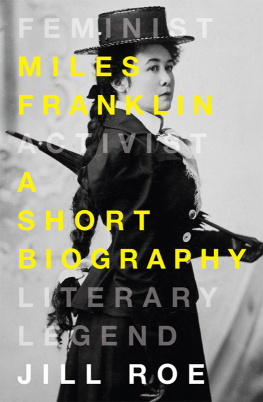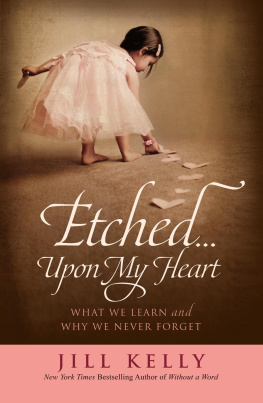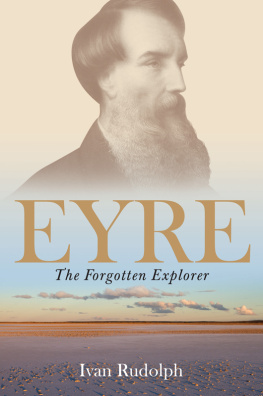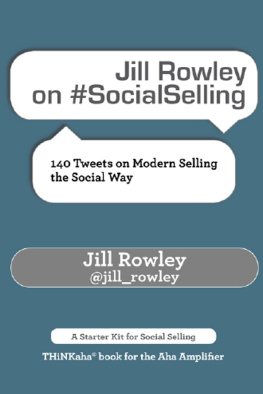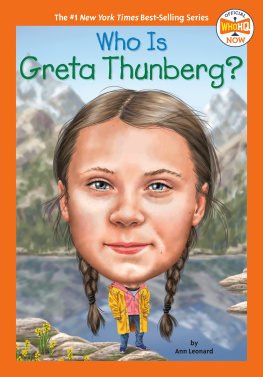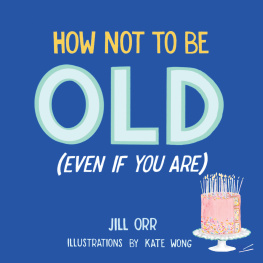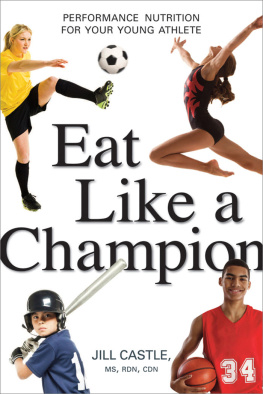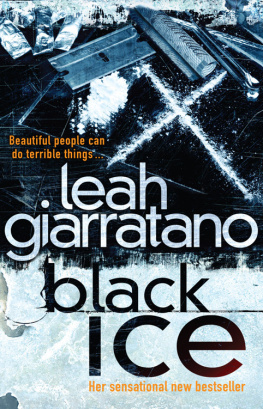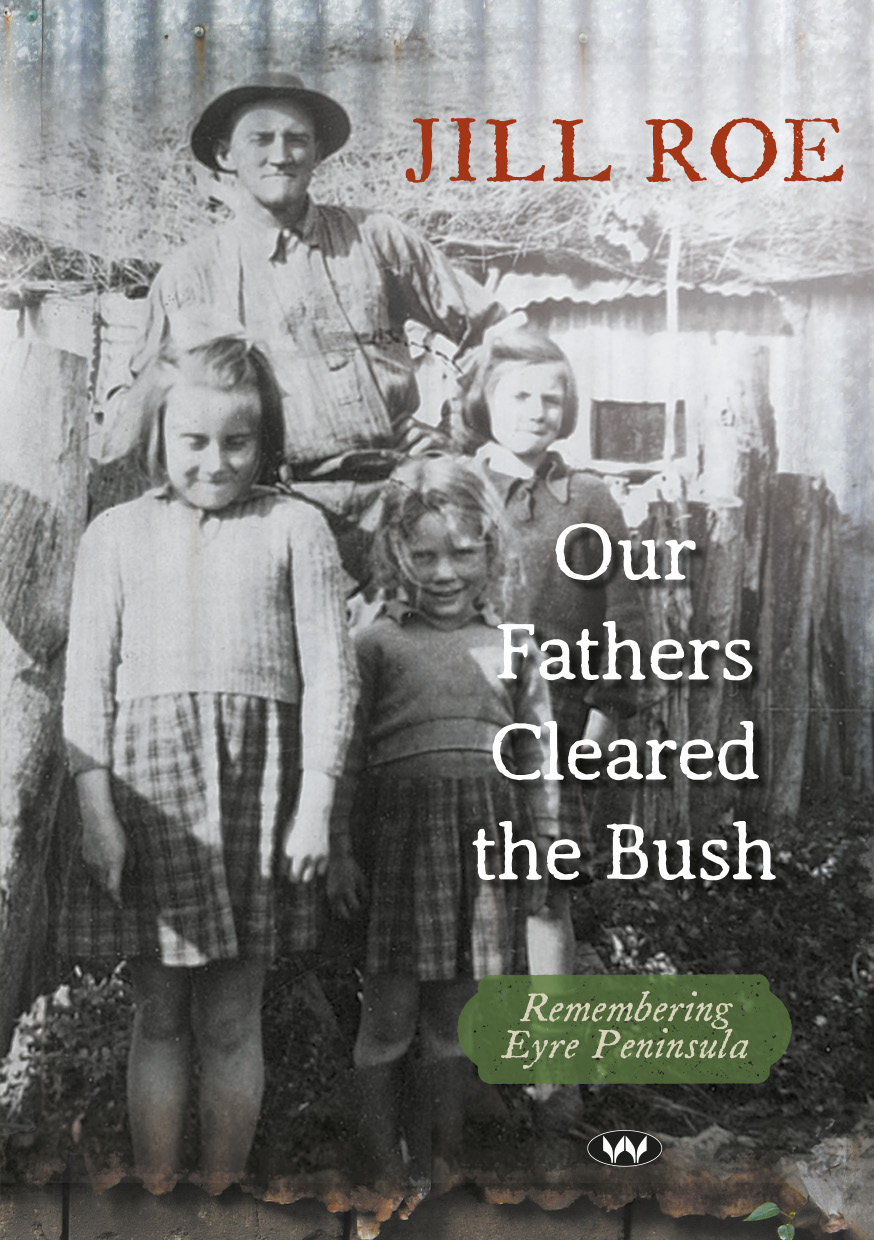
Wakefield Press

Jill Roe AO was born at Tumby Bay on South Australias Eyre Peninsula and spent her first fourteen years living on the Peninsula. She is Professor Emerita in Modern History at Macquarie University, Sydney, where she was awarded a DLitt as a higher research degree for her work on Australian writer Miles Franklin, principally the Margarey Medal-winning Stella Miles Franklin: A Biography . Her publications in Australian social and cultural history include numerous entries in the Australian Dictionary of Biography and The Wakefield Companion to South Australian History .
Jill Roe lives at Pearl Beach on the Central Coast of NSW.
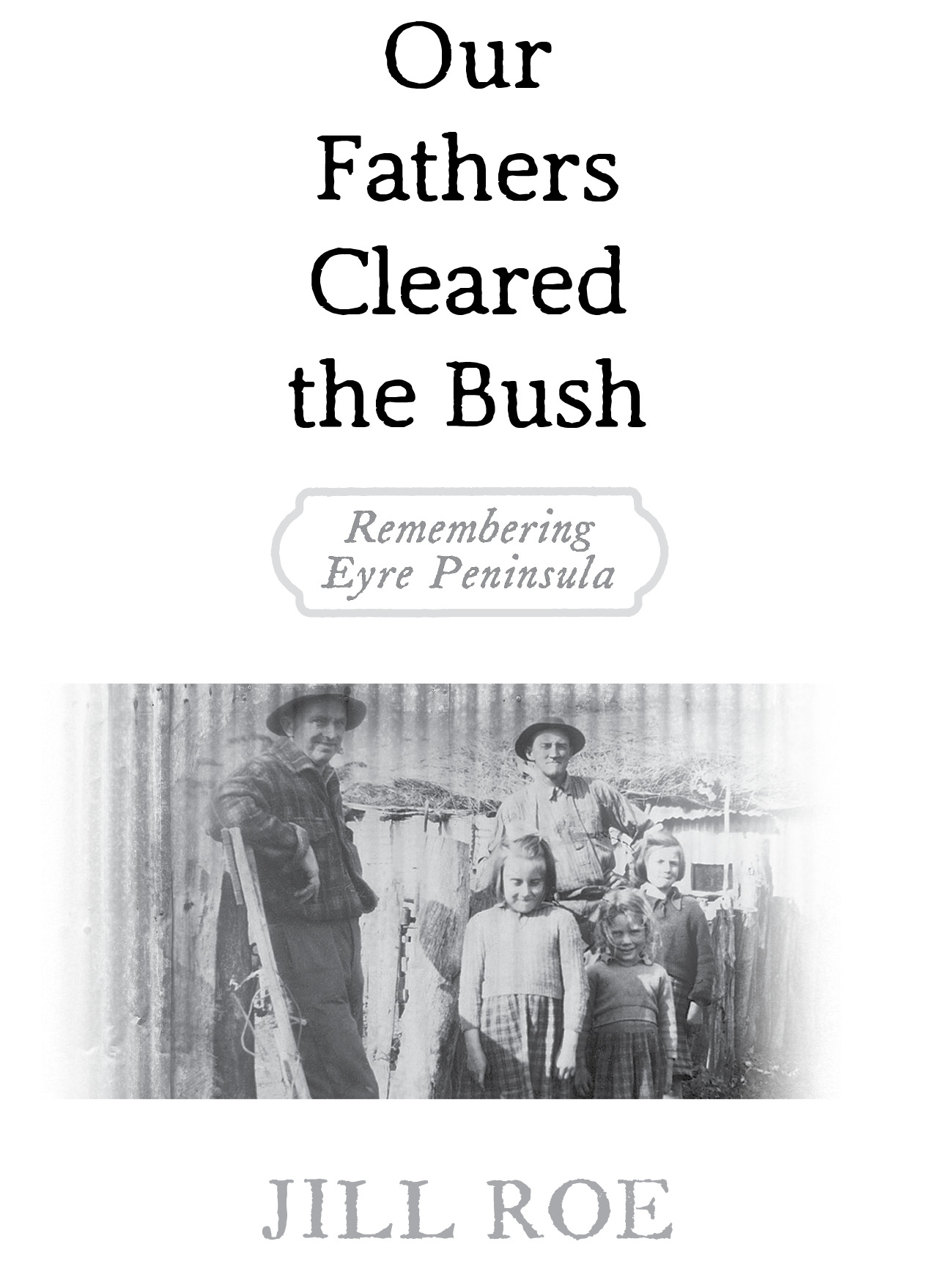
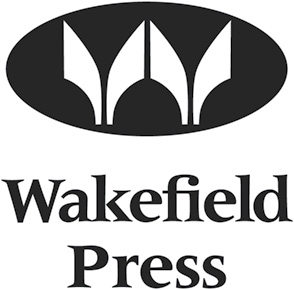
Wakefield Press
16 Rose Street
Mile End
South Australia 5031
www.wakefieldpress.com.au
First published 2016
This edition published 2016
Copyright Jill Roe, 2016
All rights reserved. This book is copyright. Apart from any fair dealing for the purposes of private study, research, criticism or review, as permitted under the Copyright Act, no part may be reproduced without written permission. Enquiries should be addressed to the publisher.
Cover designed by Liz Nicholson, designBITE
Edited by Emily Hart, Wakefield Press
Ebook conversion by Clinton Ellicott, Wakefield Press
National Library of Australia Cataloguing-in-Publication entry
Creator: Roe, Jill, 1940 , author.
Title: Our fathers cleared the bush: remembering Eyre Peninsula / Jill Roe.
ISBN: 978 1 74305 460 4 (ebook: epub).
Subjects:
Country lifeSouth AustraliaEyre PeninsulaAncedotes.
Eyre Peninsula (S.A.)History.
Eyre Peninsula (S.A.)Social life and customsAncedotes.
Dewey Number: 994.238
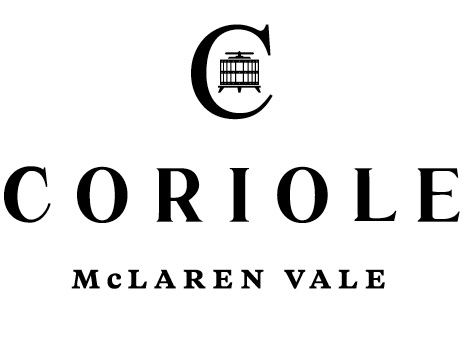
Wakefield Press thanks Coriole Vineyards
for their continued support.
Contents
For my sisters, Pauline, Jean, and Heather,
and in memory of my old friend the late Helen Bartley (Woodie), with whom I shared an Eyre Peninsula childhood.
Introduction
The origins of this book lie in my now distant childhood. I was born at Tumby Bay on Lower Eyre Peninsula, South Australia, a farmers daughter who, for reasons touched upon in the following pages, was sent away to school in the city in 1955, as it turned out for good. There, in order to meet the requirements of school geography, I first researched aspects of the Eyre Peninsula story. This I did with enthusiasm. However, at university my interests shifted from geography to history and in due course I became a historian.
In this book, written in later life and with a renewed sense of place, I include my own experience where it seems relevant. The aim is not so much to tell my own storythough I often start therenor to fill a gap in the literaturethough there is onebut rather, on the basis of personal recollections and a now quite extensive range of materials, to capture some key aspects of, and moments in, the regional experience over time.
The writing dates from 2011. It was time to make a start. Inevitably, the question first put to me by historian Manning Clark in the 1960swhat have you go to say?has loomed large. At that time, I had no answer: Who? Me? I thought. Nor did I have a viable perspective. However, by now it is a case of better late than never, and theres been plenty of time to gain a perspective.
The book has 10 chapters which run in a roughly chronological sequence, from the earliest times to more or less the present day. Seven are newly researched and, as indicated in notes, three have been previously published and are here subject to minor editing. As well, at the suggestion of colleagues, I have added as a prologue a previously published account of my early years.
Acknowledgements
For help with Chapter 7, I would like to acknowledge Robyn Arrowsmith, Jane Connors, Pat Green, Marnie Hughes-Warrington, Nick Price, and Jean Robb, also the Australian History Museum, Macquarie University, the Mitchell Library, and the Powerhouse Museum, Sydney, for assistance with research for the South Australian History Councils Annual Lecture of 13 May 2005, for which this chapter was originally written. The lecture was published in the Journal of the Historical Society of South Australia , 34, 2006, pages 110.
The Prologue was first published in First Matriculate , Against the Odds: Fifteen professional women reflect on their lives and careers , 1983, pages 5863.
For encouragement and support during the research and writing, I thank Margaret Allen, Margaret Bettison, Peggy Brock, David Carment, Baiba Berzins, Chris Cunneen, Desley Deacon, Pat Green, Maureen Heath, Beverley Kingston, Jean Robb, David Floyd Smith, Andrew Robb, Andrew and Jennie Strickland, and my colleagues at Macquarie University and the University of Adelaide.
These chapters are extensively illustrated. For this I offer a grateful general acknowledgement in addition to those that appear with the graphics. A special acknowledgement is made to Adelaide artist Annie Newmarch: the title of the book comes from an early work of hers, a print of which I was fortunate to obtain many years ago. As well, I especially thank the Mitchell Library in Sydney, the State Library of South Australia in Adelaide, the National Library of Australia in Canberra, and the municipal library in Port Lincoln, for access to materials in their care.
Several illustrations are taken from publications. These are credited briefly in the captions. The full references are:
The Personal Touch
The Personal Touch: A look at South Australias Postal History , Julie Green, Australia Post, 1986pages 23, 24
Gum Trees and Gullies
Gum Trees and Gullies , Yallunda Flat Book Committee, 1986pages 89, 97, 129
Grains of Mustard Seed
Grains of Mustard Seed , Colin Thiele, Education Department of SA, 1975page 106
Hauling the Load
Hauling the Load: A history of Australias working horses and bullocks , Malcolm Kennedy, Melbourne University Press, 1992page 118
Wildflowers of Lower Eyre Peninsula
Wildflowers of Lower Eyre Peninsula , Ursula Halls, Australian Plants Society, 2001page 122
Natural History of Eyre Peninsula
Natural History of Eyre Peninsula , Twidale, Tyler and Davies, Royal Society of South Australia, 1985page 187
Prologue
The formative years of my life were spent in the farming communities of Eyre Peninsula on the west coast of South Australia. I was born at Tumby Bay on Spencer Gulf in November 1940, the daughter of John Roe, farmer, and Edna Ivy, nee Heath, nurse and housewife. I left Eyre Peninsula in early 1955 for further schooling in Adelaide.
Current wisdom has it that mothers are the most important factor in shaping girls ambitions. This is dubious historically and, in my case, perforce untrue. My mother died on 13 January 1942 in a private hospital in Adelaide after a long illness when I was fourteen months old. She died, in the words of the death certificate, of pulmonary tuberculosis, some months, or, as her sister said grimly, of washing too many sheets. In todays terms, it was a preventable death. Had the necessary antibiotics been available, she may have recovered, despite four pregnancies in seven years and vulnerability to tuberculosis, which had already carried off one of her sisters. In historical terms, it was a death of its time, a late instance of the appalling rate of maternal mortality prevailing in Australia until the late 1940s, also evidence of the deprivation of the Great Depression as it affected small wheat farmers on the edge of subsistence.
Next page

